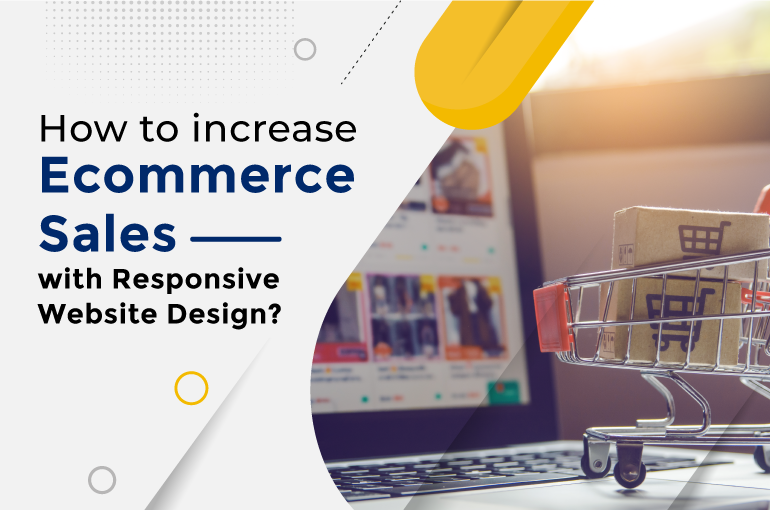Introduction
In the digital era, where the majority of people rely on their smartphones and tablets for online activities, having a website that seamlessly adapts to different screen sizes and devices is paramount. Responsive website design refers to an approach that ensures your website layout and content adjust dynamically based on the user’s device, providing an optimal viewing experience. Let’s delve deeper into the benefits of responsive website design for boosting ecommerce sales.
Understanding Responsive Website Design
Responsive website design utilizes HTML and CSS coding techniques to create a flexible and adaptable layout. Instead of maintaining separate versions of your website for different devices, responsive design enables your website to automatically adjust and optimize its appearance based on the user’s screen size, whether it’s a desktop, laptop, tablet, or smartphone.
Enhanced User Experience
One of the primary advantages of responsive website design is that it enhances the user experience. A responsive website ensures that your online store is visually appealing, easy to navigate, and user-friendly across various devices. By providing a seamless browsing experience, visitors are more likely to stay on your website for longer periods, explore your products, and ultimately make a purchase.
Improved Mobile Performance
With the widespread use of mobile devices, it is crucial to prioritize the mobile performance of your ecommerce website. Responsive design optimizes your website’s loading speed and performance on mobile devices, reducing bounce rates and increasing the likelihood of conversions. By creating a fast and smooth mobile experience, you can capture the attention of potential customers and encourage them to explore your offerings further.
Higher Conversion Rates
A responsive website design can significantly impact your conversion rates. When users can easily navigate your website, find the information they need, and make purchases effortlessly, they are more likely to convert into paying customers. By streamlining the buying process and eliminating any obstacles caused by non-responsive design elements, you can increase your ecommerce sales and revenue.
Enhanced Search Engine Optimization (SEO)
Search engines, such as Google, consider mobile-friendliness as a ranking factor. Websites with responsive designs are more likely to rank higher in search engine results pages (SERPs), improving their visibility and attracting organic traffic. By implementing responsive website design, you can enhance your SEO efforts and drive more potential customers to your ecommerce store.
Building Trust and Credibility
A well-designed responsive website builds trust and credibility among your target audience. Users appreciate a website that is consistent and visually appealing across different devices, as it reflects a professional and trustworthy brand image. By providing a positive user experience, you can establish credibility and encourage repeat visits and customer loyalty.
Boosting Social Sharing and Engagement
Responsive website design facilitates social sharing and engagement. When users have a seamless experience while accessing your website on their preferred devices, they are more likely to share your content on social media platforms. This increased social sharing can amplify your brand’s visibility, attract new customers, and drive traffic to your ecommerce store.
Cost-Effectiveness
Investing in responsive website design is cost-effective in the long run. Rather than creating and maintaining separate versions of your website for different devices, responsive design allows you to have a single website that automatically adapts to various screen sizes. This saves time, effort, and resources, enabling you to focus on other aspects of your ecommerce business.
Competing in a Mobile-First Era
In an increasingly mobile-first era, having a responsive website design is no longer optional but necessary to stay competitive. With a significant portion of online purchases happening through mobile devices, failing to optimize your website for mobile users can result in missed opportunities and potential loss of sales. Stay ahead of the curve by embracing responsive design and providing an exceptional mobile experience for your customers.
Incorporating Responsive Design Elements
To ensure the success of your ecommerce website, it’s essential to incorporate key responsive design elements. These elements include flexible grids, media queries, and scalable images. By utilizing these techniques, you can create a visually appealing and functional website that seamlessly adjusts to different devices and screen sizes.
Best Practices for Responsive Website Design
When implementing responsive website design, it is important to follow best practices to achieve optimal results. These practices include mobile-first design, prioritizing important content, using clear and concise navigation menus, optimizing images for faster loading times, and testing your website on various devices to ensure compatibility and responsiveness.
Testing and Optimization
After implementing responsive design, it is crucial to regularly test and optimize your website across different devices and screen sizes. This ensures that your website remains responsive and provides an excellent user experience. Constant website testing and optimization help identify and fix any issues that may arise and guarantee that your website performs at its best.
Monitoring and Analytics
Utilizing monitoring and analytics tools is essential to track the performance of your responsive website design. These tools provide valuable insights into user behavior, traffic sources, conversion rates, and other key metrics. By monitoring and analyzing this data, you can identify areas for improvement and make data-driven decisions to further enhance your ecommerce sales.
Conclusion
In the fast-paced world of ecommerce development, a responsive website design is a game-changer. It enhances user experience, improves mobile performance, increases conversion rates, boosts SEO efforts, builds trust and credibility, and amplifies social sharing and engagement. By adopting responsive design principles, you can position your ecommerce business for success in the mobile-first era. Don’t miss out on the opportunity to increase your ecommerce sales and reach a wider audience.


